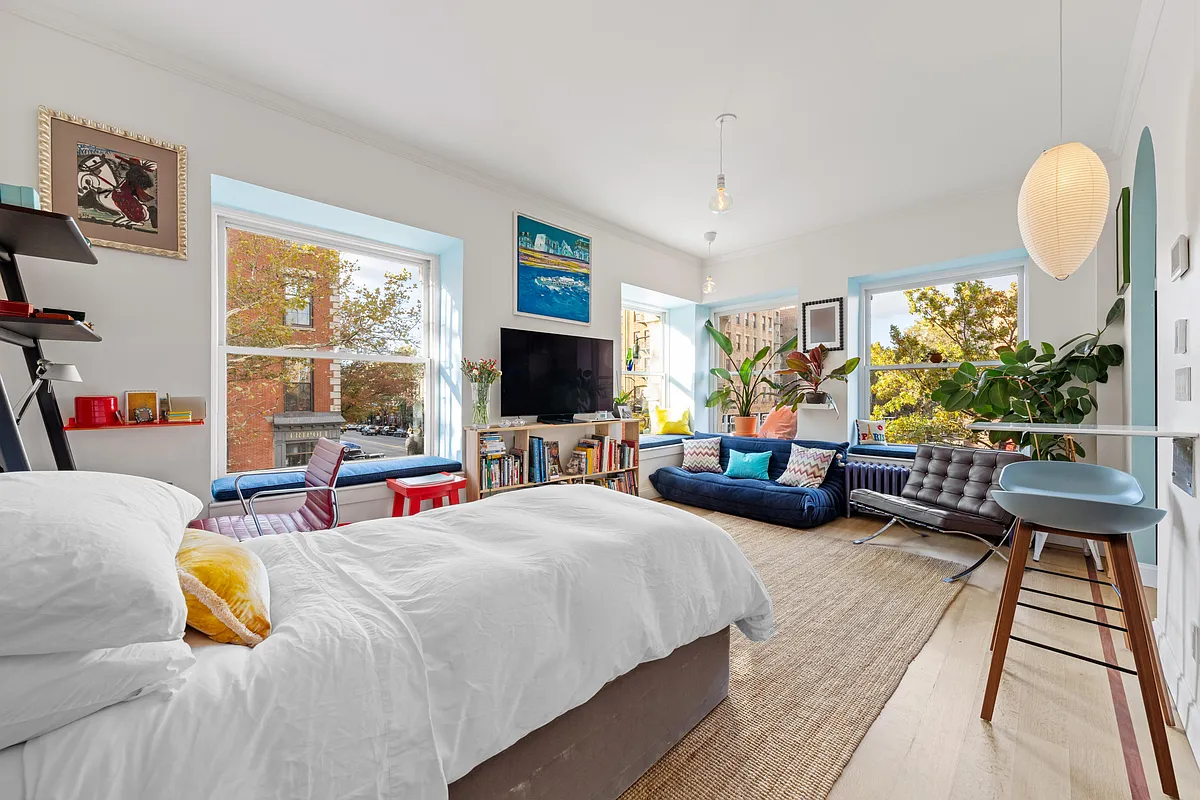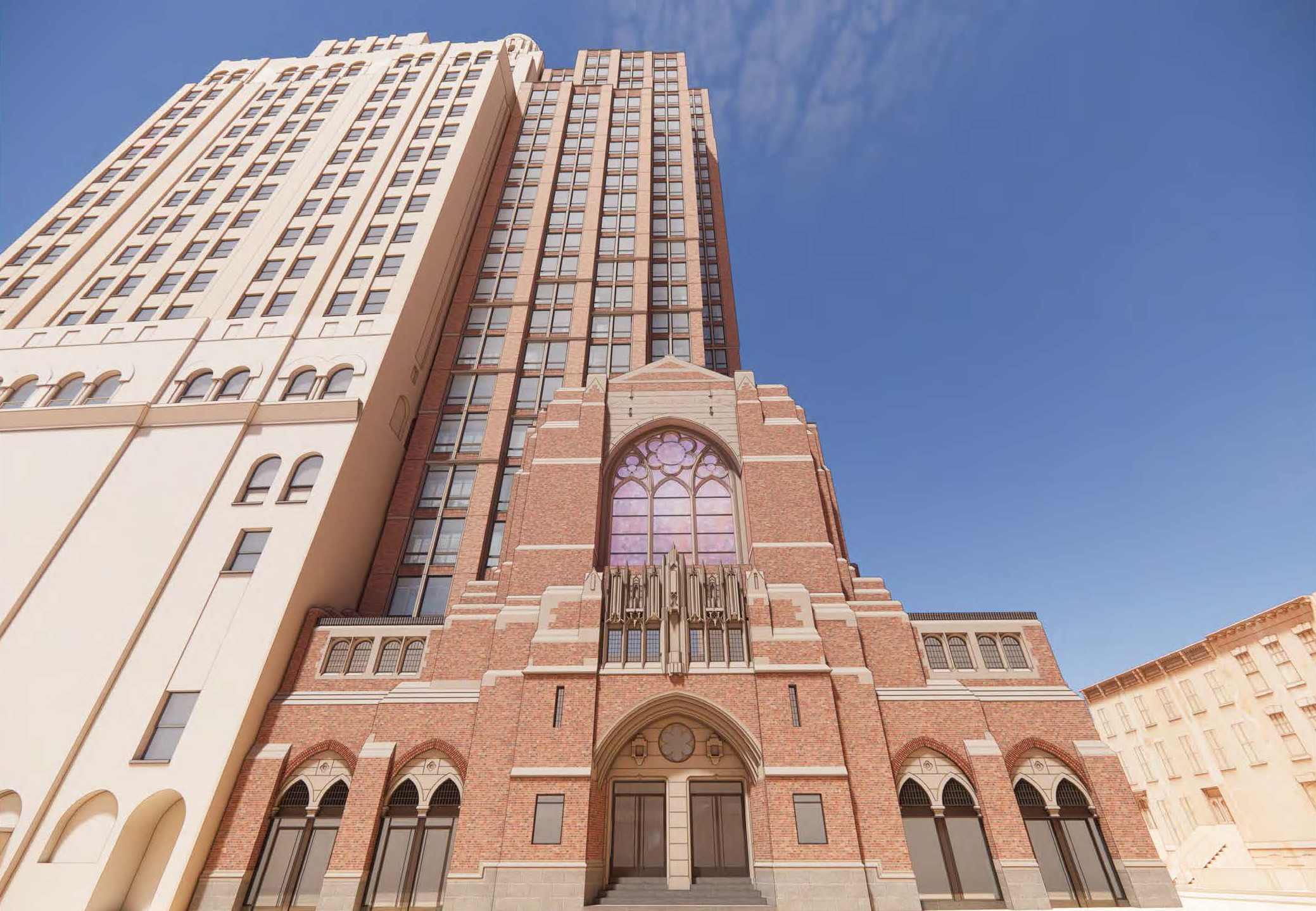Domino Decision Not "Either-Or"
In response to a Daily News editorial a couple of weeks back that mocked the idea of landmarking the Domino Sugar Factory (“it might be considered a landmark, as in, ‘Oh, yeah, there’s that big useless place with the big worn-out sign that just sits there'”), the Municipal Art Society’s Lisa Kersavage wrote a rebuttal…


In response to a Daily News editorial a couple of weeks back that mocked the idea of landmarking the Domino Sugar Factory (“it might be considered a landmark, as in, ‘Oh, yeah, there’s that big useless place with the big worn-out sign that just sits there'”), the Municipal Art Society’s Lisa Kersavage wrote a rebuttal that the paper ran the next day. According to Kersavage, opponents of preservation like to paint a black-and-white picture of the decision whether to save or raze a site like this by implying that a preservationist stance is necessarily anti-affordable housing.
Neighborhoods where manufacturing and industrial buildings are retained and reused, like in DUMBO and Soho, have an exciting character and some of the highest property values in the city. We’ve reused buildings effectively before and now is no time to turn back the clock. The city must take steps to protect our heritage. And when developers tell us that affordable housing and historic preservation can’t coexist, preservationists and housing advocates must stand together and show them they are wrong.
You know where we stand on preserving the Domino Sugar Factory. Are there any readers who self-identify as being particularly concerned with affordable housing who think that the owners should make an effort to preserve the factory? Or does the need for more units of housing trump any concerns like these?
Oh, Sugar [NY Daily News]
Living in a Sugar Factory [MAS.org]
Photo by Jack Jeffries





Everyones comments are way out of scope. I’ve lived in williamsburg for many years now and been an advocate for the reuse and preservation of many great, mostly industrial buildings. It’s tricky with Domino b/c it’s unclear how much can actually be reused -> as it was used for heavy manufacturing for so many years it is yet to be determined how much will need to be refurbished/demonished before it is deemed “safe.” In general, I think we are building too many residential units in brklyn and it does not seem sustainable to me. I like the idea of converting Domino to a museam. Great idea. Converting it to something that is will generate some jobs/revenue is a smart course of action.
9:57 am — I will certainly take you up on the offer, if you visit my project first (bring a crew). What I’m working on is kind of adaptive too, I guess, in more ways than one: I found a big old building and got my whole family — parents, brother, business partner — to invest together and live there together. Yeah I know, yikes. But you know what? So far — through the ordeal of purchasing and designing and begining construction — we’ve actually all been having a lot of fun, so I’m hoping we’ll all get along when it’s actually NICE.
Come by anytime — it’s really an interesting thing to see at this phase! izmonk@gmail.com
Karl, I’m the one who mentioned the Tate Modern above(10:56pm) — great minds think alike!!!!
And just today, there’s an article about the Whitney looking for more space and having an identity crisis. I completely agree with you — we should start lobbying the whitney to use this building!!!!
Thanks, anon 1:36. Just wanted to acknowledge that I read your apology, and I totally agree with you.
In my opinion, the last time old buildings were transformed into affordable housing was at the end of the 70s, when the city was going bankrupt and tenants started converting suddenly empty loft buildings.
ps: you’d be welcome at my house anytime. bring tools.
Is it just me, or would this be the perfect site for a contemporary arts museum that leverages the existing structure of this industrial building (think the Tate Modern in London.) Imagine what a world-class architect could do with this site for a museum!
1. It sits in the most dynamic arts district in Brooklyn.
2. It has incredible views of Manhattan.
3. It would be accessible by ferry from multiple places in Manhattan.
4. Plus, it seems like it would be (relatively) easy to add an additional JMZ train stop on the Williamsburg Bridge right on Kent Avenue.
The Guggenheim always wanted another site in the city, why not here?
I’m dreaming, right?
My apologies. I should know better than to start spouting off at this late hour; I can barely read, let alone take in what I’m reading. I focused on the rest of the paragraph, which spoke about “adaptive housing,” but CHP did begin that paragraph referring to “affordable housing”, which is what you quoted and which is what you were obviously referring to. Sorry for ignoring that essential detail.
I applaud your choice of housing and your resistance to advice. I covet it, even. Sounds like an awesome place.
Your point is valid. Buildings have only been preserved because the wealthy have been the ones, thus far, who’ve had the luxury of preserving charm and character at the premium costs of conversion. (As everyone knows only too well who’s done even the smallest renovation work, it’s cheaper to build from scratch than to work with a preexisting building, and cheaper means affordable. This fact is probably inherent in your point; but it does bring up the issue — for all new housing, adapted or turnkey — where is the affordble housing quota?
I don’t agree with CHP that it’s as easy as getting a bunch of creative people to just get to work and adapt. Creativity has a very steep price tag. What he’s talking about takes great wealth.
Unfortunately.
To answer your question, no, I can’t think of any examples of adaptive affordable housing.
anon 10:54–did you not see the word “affordable” associated with my question? CHP said that preservation and affordable housing meet everyday and I wanted to know where. Apparently, so do you.
And, btw, I happen to live at the Jersey Shore in a very tiny house that was built in 1876. I have resisted advice to slap vinyl siding on the outside of it, rip the plaster walls out of the inside of it, or sell it to somebody who would be more than happy to tear it down and re-build to the full outlines of the lot.
There’s a great article in the Times today about the Tate Modern, and how its conversion from a powerplant to a museum trumps even our own fancypants MoMA.
6:21 pm You want examples? Mr. Walentas could give you a few tips, but he’s too busy selling DUMBO’s old crappy architecture for gazillions of dollars.
What part of the sickening real estate explosion in DUMBO/SOHO/TRIBECA don’t you understand? Have you been to the city lately (like in the past 20 years)? Do you understand what people are willing to pay many millions of dollars EACH for?
And how that doesn’t compare, even remotely, to the prefab condos of the Jersey Shore just accross the water?
It’s easy to take something down. Takes a week. It’s easy to put something up. A few months.
Problem is, once you replace history-earned character with greed-generated crap, you DIMINISH your property value exponentially, not raise it.
Only the greediest and dumbest developers would let short term financial profiteering undermine the potential for longterm growth.